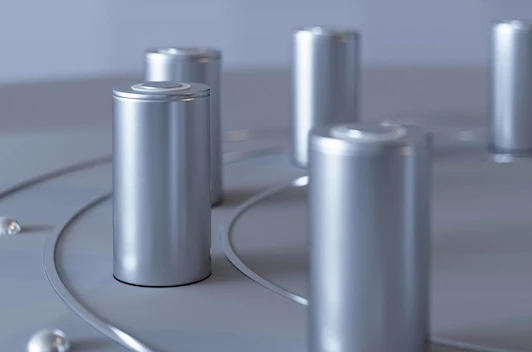Battery energy density is one of the key indicators of battery performance, directly affecting the range and efficiency of electric vehicles, energy storage systems, and consumer electronics. As the global demand for clean energy and sustainable development continues to rise, improving battery energy density has become a core focus of technological innovation. This article will delve into the definition, importance, current technological advancements, and future trends of battery energy density, helping you gain a comprehensive understanding of this critical field.
1. What is Battery Energy Density?
Battery energy density refers to the amount of energy a battery can store per unit of mass or volume, typically measured in Wh/kg (watt-hours per kilogram) or Wh/L (watt-hours per liter). The higher the energy density, the more energy a battery can provide for the same weight or volume, thereby extending the usage time or driving range of devices.
- Gravimetric Energy Density (Wh/kg): Measures the energy a battery can provide per kilogram of weight.
- Volumetric Energy Density (Wh/L): Measures the energy a battery can provide per liter of volume.

2. Importance of Battery Energy Density
Battery energy density has profound implications across various industries, particularly in the following areas:
- Electric Vehicles (EVs): Higher energy density means longer driving range and lighter battery packs, improving vehicle performance and user experience.
- Energy Storage Systems: High energy density batteries can store more energy, supporting grid stability and efficient use of renewable energy.
- Consumer Electronics: Devices like smartphones and laptops require high energy density batteries to extend battery life while reducing size.
3. Current Technological Advancements in Battery Energy Density
Currently, there are significant differences in energy density among mainstream battery technologies:
- Lithium Iron Phosphate (LFP) Batteries: Energy density around 150-200 Wh/kg, known for safety and low cost, widely used in energy storage and electric vehicles.
- Nickel Cobalt Manganese (NCM) / Nickel Cobalt Aluminum (NCA) Batteries: Energy density up to 250-300 Wh/kg, commonly used in high-end electric vehicles.
- Solid-State Batteries: Expected to exceed 400 Wh/kg in energy density, regarded as the next-generation battery technology.
- Lithium-Sulfur Batteries: Theoretical energy density of up to 2600 Wh/kg, but lower maturity in technology.
In recent years, companies like CATL and BYD have enhanced the energy density of LFP batteries to nearly 250 Wh/kg through material innovation and process optimization, narrowing the gap with NCM batteries.
4. Key Technologies for Improving Battery Energy Density
- Cathode Material Innovation: Developing high-nickel ternary materials, lithium-rich manganese-based materials, etc., to increase battery capacity.
- Anode Material Optimization: Silicon-carbon composite materials replacing traditional graphite to improve energy density.
- Solid-State Electrolytes: Solid-state batteries use solid electrolytes, reducing electrolyte weight and improving safety.
- Battery Structure Design: Technologies like blade batteries and Cell-to-Pack (CTP) optimize space utilization.
5. Future Development Trends
- Balancing Energy Density and Safety: As energy density improves, battery safety becomes a focus of research, with thermal management systems and material stability undergoing further optimization.
- Commercialization of New Battery Technologies: Solid-state batteries, lithium-sulfur batteries, etc., are expected to achieve large-scale applications within the next 5-10 years.
- Policy Support: Government policies supporting electric vehicles and energy storage systems will accelerate the development and adoption of high energy density batteries.
- Cost Reduction: With technological advancements and scaled production, the cost of high energy density batteries will gradually decrease, driving market penetration.
6.Frequently Asked Questions (FAQ)
Q1: Is higher energy density always better?
Not necessarily. Increasing energy density often comes with challenges in cost and safety, which must be considered based on the application scenario. For example, high energy density batteries may require more advanced thermal management, increasing system complexity.
Q2: Which has higher energy density, LFP batteries or ternary batteries?
Ternary batteries have higher energy density, typically reaching 250-300 Wh/kg, while LFP batteries are around 150-200 Wh/kg. However, LFP batteries have advantages in terms of cost, safety, and cycle life.
Q3: When will solid-state batteries become mainstream?
Solid-state batteries are expected to gradually enter the commercialization stage between 2025 and 2030. Currently, several companies are conducting small-scale testing and validation.
Q4: What impact does improving battery energy density have on electric vehicles?
Higher energy density can significantly extend the driving range of electric vehicles, reduce charging frequency, and decrease battery weight, thereby improving overall vehicle performance.
Q5: How can battery energy density be increased?
Energy density can be effectively enhanced through material innovations (such as high-nickel cathodes, silicon-carbon anodes), structural optimizations (like blade batteries and CTP technology), and the application of new electrolytes (such as solid-state electrolytes).
Q6: What challenges come with increasing energy density?
Increasing energy density may lead to safety issues (such as thermal runaway risk), higher costs (due to new materials and processes), and greater manufacturing complexity.
Q7: What are the energy density requirements for energy storage systems?
Energy storage systems focus more on cost, cycle life, and safety of batteries. While energy density is important, it is not the only factor to consider. LFP batteries are a preferred choice in the energy storage field due to their cost-effectiveness.
Q8: What is the theoretical limit for future battery energy density?
Theoretically, lithium-sulfur batteries can achieve an energy density of up to 2600 Wh/kg, but the technology is not yet mature. Over the next 10-20 years, battery energy density is expected to exceed 500 Wh/kg.
Q9: Is battery energy density related to charging speed?
Energy density mainly affects a battery's energy storage capability, while charging speed depends more on the chemical properties of the battery and charging technology (e.g., fast-charging technology). Both factors can be optimized independently.
Q10: How should one choose the appropriate battery energy density?
Selecting the right battery energy density depends on the specific application. For example, electric vehicles require high energy density to extend range, while energy storage systems may place more emphasis on cost and safety.

